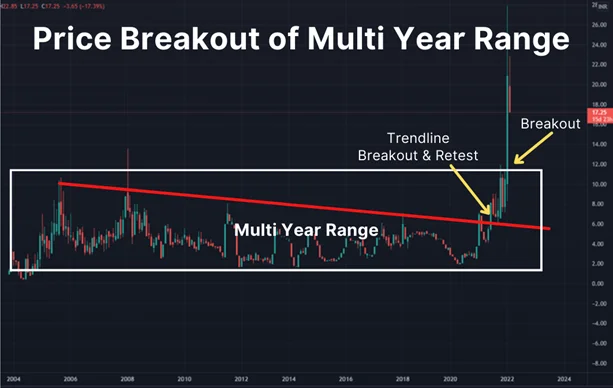Penny stocks!! Does the word ring some bells in your heads?? It is the most lucrative bet if you play it right. The most favorite of an investor (especially Retail Investors). You must have heard about this term before? If not, then we are going to talk about it in this article of StockTrone.
Key Highlights
What are Penny Stocks?
Risk involved in Penny Stocks
5 Important factors to consider before approaching Penny Stocks
Advantages and Disadvantages of investments in Penny Stocks
What are Penny Stocks?
Penny stocks are those stocks that trade at a very low market price and have a very low market capitalization. These kinds of stocks in the Indian stock market have low liquidity and are speculative in nature. The most basic idea before approaching the penny stock is their low current market price (CMP).
“Investors believe that the prices of Penny Stocks can double easily as compared to big stocks.”
There is nothing wrong with this statement and it is a fact that a smaller thing can grow faster as compared to the bigger ones. But before investing in penny stocks, an investor should understand the inherent risks that follow.
There is a common misconception about penny stocks among new investors and traders. Most of them think that a low price stock is a penny stock, but it’s not. For e.g., Yes Bank was one of the best performers of its time, which is currently trading at Rs. 13.5/- but considering it a penny stock will be the wrong conception.
Definition of Penny Stocks
There is no theoretical definition for penny stocks. We define the penny stocks in context with the Indian stock market as “those stocks which are trading at a very low price, i.e., below Rs. 30/- and issued by a company having a market cap less than 500 crores”. The most important factor is the market cap and the company with a small CMP does not necessarily mean that the stock is a penny stock, which clearly infers that the Yes Bank with a market cap of Rs. 34074 cr trading at Rs. 13.5/- is not a penny stock. Similarly, Vodafone Idea Ltd (IDEA) with a CMP of Rs. 9.65/- and Market Cap of Rs. 31321, is not a penny stock either.
Some of the examples of penny stocks are listed below.
| Penny Stocks | Current Market Price (Rupees) | Market Cap (Cr) |
| RTCL Ltd. | 13.90 | 16 |
| Tranway Technology Ltd. | 16.30 | 17 |
| Triveni Glass Ltd. | 18.25 | 23 |
| Orosil Smiths India Ltd. | 6.29 | 25 |
| Swiss Military Consumer Good Ltd. | 26.65 | 261 |
| IL&FS Engineering and Construction Company Ltd. | 12.15 | 159 |
| Tine Agro Ltd. | 44 | 24 |
| Kavveri Telecom Products Ltd. | 8.75 | 17 |
| Kinetic Trust Ltd. | 13.40 | 4 |
Before investing in penny stocks, you should be aware of the following 5 key factors that may impact your portfolio.
- Recent Price Action
- Fundamentals of the Company
- Business and Business Model
- Management of the Company
- Patience is the key
So, let’s discuss in detail, the 5 most important factors you must consider before approaching a penny stock.
1. Recent Price Action
Any changes in the fundamentals of a company or business impact the share price. So, anything good or bad happening in the company will be discounted into the market price. Thus, the recent one-year price behavior is the most important factor. So, you must be wondering how can we determine the penny stock based on the one-year recent price action? Let’s say, initially, a stock starts its movement, and that’s the point when it comes into our radar to further analyze other fundamental parameters. The recent price movement must have gained strength and it should have started its uptrend in longer time frames like weekly or monthly. Usually, a stock looks interesting on technical parameters if it gives an important breakout.

2. Fundamentals of the Company
The identified strength in any penny stock price can be fundamental driven or just a Pump and Dump Scheme. The real growth in business is seen in quarterly and annual outcomes. The fundamentals of the company should be improving on a quarterly basis to support the recent price movement. Increasing sales, EBIDTA revenue, profit margin, and decreasing debt (if any) are good indications of growth. Shareholding patterns give an indication of big player involvement. A high promoter holding and increase in other institutional holdings on a quarterly basis is also a great sign.
3. Business and Business Model
There are a number of businesses from conventional metals, FMCG to new internet-related companies. All businesses are not the same, so before investing, we must know about the company. Further, it would be better to look for the next 10 years’ prospects for the business, its current growth rate, and expected CAGR in the coming future. Some of the buzzing sectors in recent years are the Electric Vehicle (EV) segment, renewable energy, IoT, etc. Further, ask several questions to yourself before investing, such as
- Is this business going to survive for the next 10 years?
- can the stock compete against already established Businesses?
One should be aware of the company business and the changes in the business model. Is the company doing an expansion? Or has the management changed? Or whether revenues are growing? Any Merger news with the bigger brand?
4. Management of the Company
Company management is the people responsible for making key decisions. It is the company management, who is going to decide what the company is planning to do with Investors’ money. So, you must know the company management before investing in it. Can I trust this group of people? You may check it out from their website. The company management should have a LinkedIn profile.
Company management people may also be found on other social media platforms like Twitter, Instagram, etc. Any hidden information about the management raises a red flag over the company. The presence over social media platforms helps in identifying the shell company.
“One should be skeptical of a firm that does not provide contact information for its management on its website, LinkedIn page, or any other means to contact them directly.”
Note: Shell Company means it’s not a company. It is only making us feel about its presence.
5. Patience is the key
Well, let’s say we saw stock making fresh new high every week, we checked its financials, business model, and management. We are overall satisfied and ready to take a risk. What’s next? Identify how much maximum capital you can lose and invest that amount of sum in a penny stock. Remember that after a year, if the stock started to perform, you can always have an opportunity to buy more.
“Rome was not built in a day.”
Your stock cannot be a multi-bagger in one year. It takes time to grow. Bajaj Finance took 20 years to turn into a multi-bagger. Don’t buy the full quantity at once. If your investment starts doing better on a quarterly basis, start adding more quantities. Last but not least, patience is the key in trading or investing.
Advantages and Disadvantages of Penny Stocks
Penny stocks are low liquid high growth potential in a short span of time. Penny stocks are having a low market cap, are prone to be volatile, and can also give good rewards in a very short span of time. But there are several disadvantages that you cannot ignore.
- Lack of liquidity and trading volume makes it difficult to enter and exit at the desired price
- Most of these stocks keep hitting circuits, i.e., upper circuit in uptrend behaviour and lower circuit in downtrend behaviour
- Lack of availability of data and information about the business and management to the retail investors
- Technical analysis usually can’t be used as the smaller market cap can be manipulated any time by a big player (even retail HNWI are trading with more than 20-30 cr capital)
- The lack of information about penny stocks to the retail investors makes it hard to make informed decisions
Conclusion
A rigorous analysis is required to find a fundamentally good penny stock at its initial period. If you find high-quality, fundamentally strong penny stocks with good management teams, patented technologies and proven upside potential, you can multiply your money for sure. I hope this blog will help you understand the penny stocks, the risks involved in them, and how to approach them.
Let us know what you think about Penny Stocks and how do you choose penny stocks to invest in. Subscribe to our trading page on Instagram for daily insights about trading moves.
